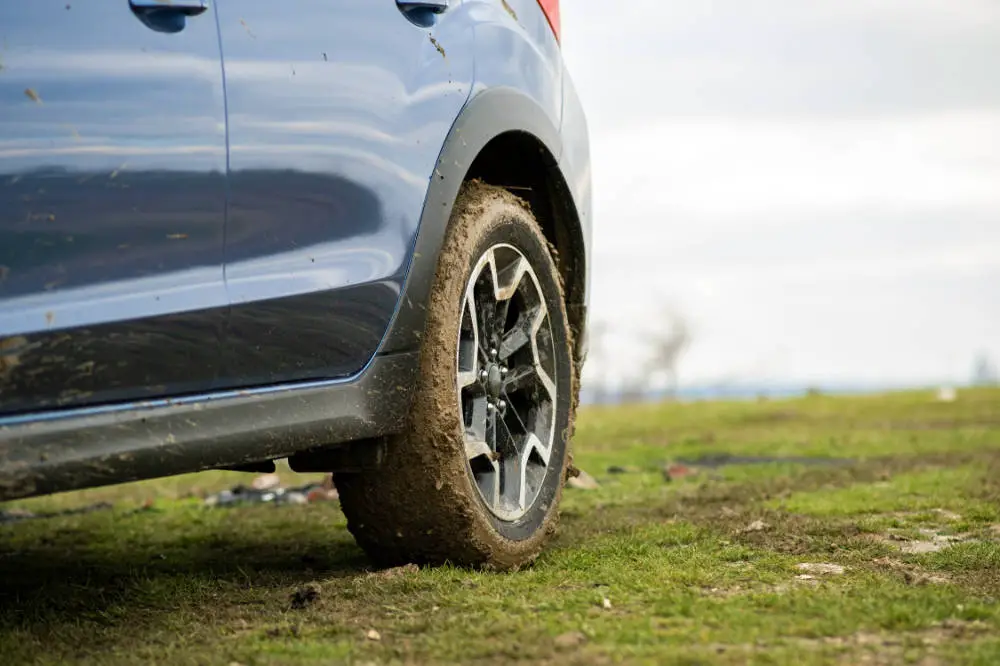Toyota’s vehicles are, in general, well-made cars. They are not troubling, and they offer a fantastic ride.
Having a Toyota in your corner means you will always have a dependable vehicle that doesn’t know much about the route to the mechanic.
But, in some cases, since the RAV4 is full of new technology, there are often some malfunctions. Of course, those malfunctions can be solvable quickly, but still, they are boring and annoying.
In this article, find out about AWD malfunction and what you can do to solve it.
Advertising links are marked with *. We receive a small commission on sales, nothing changes for you.
All-Wheel-Drive (AWD) Malfunction on the RAV4 Vehicles

Welcome to the AWD RAV4 section! Find out about the malfunction and what you can do to detect it and solve it.
How Does the Toyota RAV4 AWD System Work?
Toyota Dynamic Torque Control AWD, which debuted on the 2013 RAV4, actively distributes torque between the front and back axles and the two rear wheels.
It uses an electromagnetic connection in front of the rear differential to engage or disengage the rear wheels as needed.
As a consequence, driving stability and traction is increased.
Numerous sensors are used by this system, which provides the RAV4 with AWD, to measure the vehicle’s speed and yaw and the driver’s steering, throttle, and braking inputs.
These control when and how torque is distributed between the rear wheels and the rear axle.
The front wheels receive the total engine torque by default while traveling straight ahead. Using only the front wheels saves mechanical stress and improves fuel efficiency.
However, depending on the situation, anything between 10% and 50% of the engine’s torque can be sent backward.
The rear axle can be motorized to help with traction when accelerating. In addition, the electromagnetic coupling may transfer engine torque to the rear wheels under specific steering circumstances.
This enhances stability, tightens handling, and lessens strain on the front tires.
By depressing a button within the cockpit, the driver of certain Toyota vehicles can manually engage a 50:50 torque split for all-wheel drive.
The so-called all-wheel drive lock switch delivers torque through snowy, muddy, or rocky conditions with consistency and predictability.
When the motorist clicks the button once more or when they reach a speed of above 25 mph, the 50:50 split disengages.
This is the AWD System in short lines.
How Do You Turn Off the AWD on a RAV4 2020?
You should have a variety of buttons and choices at your disposal. The “4×4 lock” button is one of these. This button must be pressed to disable your car’s four-wheel drive instantly.
To turn off 4WD, basically, all you need to do is press the lock button once again once you’ve finished using it.
The 4WD mode will also automatically disengage if you go beyond 25 mph in your 2020 Toyota RAV4.
Is AWD Always On RAV4?
No, the all-wheel-drive (AWD) is not on all the time.
Even if you don’t place the car in one of the other modes, the vehicle decides when AWD is necessary.
Also, as mentioned above, the 4WD mode will automatically disengage if you go beyond 25 mph in your 2020 Toyota RAV4.
What Does the AWD Malfunction Mean?
If the notice mentioned messages like these:
- “AWD System Malfunction,” or
- “2WS Mode Engaged.”
…or a variant of it appears on your multi-information display; there is a problem with your Toyota RAV4’s all-wheel drive.
It can be the most straightforward error ever, but it will still give that signal and cause you to panic over nothing.
You didn’t necessarily do anything particular as a driver to cause it.
But, you must take action to fix the issue and guarantee you can utilize the all-wheel drive capability moving forward.
What Is Causing the AWD Malfunction?
There could be several reasons why your AWD Malfunction light is on.
Let’s have a quick look below!
Unstable Gas Cap
The gas cap will admit pollutants into your gasoline tank if damaged or loose, which will cause evaporation or poor fuel economy.
Although it seems relatively straightforward and elementary, this is the root of many issues, including other system warnings.
Transmission System Problems
The transmission system is essential to provide the vehicle’s four wheels with more traction on the road. The vehicle’s four wheels cannot go forward smoothly when this system has a problem.
This component frequently develops issues like fluid leaks or spilling out, which also impact the AWD of the car.
As a result, you can occasionally hear a grinding or clicking sound when driving.
The transfer case contains the fluid used for gear shifting, another system component. However, the dirty fluid makes shifting gears difficult.
It is crucial to check this system frequently. In addition, it is essential to change the fluid often to maintain the engine’s peak performance.
Errors in Speed Sensors
The speedometer gives information about the speed of the car. When the computer detects this data, it uses it to provide the RPMs and facilitate gear shifting.
When traveling on a hilly or uneven surface, these sensors begin to fail. Faulty sensors turn off the car’s traction and stability systems.
The speed sensors on the wheel deteriorate with repeated exposure to the elements of the road outdoors.
The inefficient speed sensors cannot provide accurate speed maintenance and gear change indicators.
When the AWD is active and the sensors aren’t working correctly, you shouldn’t drive it since you’ll lose traction and stability.
Ignition is On
The ignition system will instantly shut off when you start the automobile using the proper approach.
The engine will misfire and sustain component damage if the ignition system is constantly on.
This prevalent problem is caused by the air/fuel combination in this chamber continuously burning owing to overheating. In addition, spark plugs that are worn out and broken further add to the issues.
In this case, you should avoid taking the automobile on bumpy or mountainous roads for the foreseeable future because doing so speeds up breakdown and raises engine temperature.
How to Solve the AWD Malfunction Issue?
To try to fix it, you should first restart the computer and try to remove the signal.
The AWD system malfunction signal might activate for various reasons, and the driver will require diagnostic equipment to talk to the car’s computer system and figure out the problem.
However, if you consider yourself handy and are familiar with automobiles, you may be able to resolve some of the problems that led to the AWD system failing.
You can attempt to change the wire harness if you are 100% sure it is a wiring problem. Frequently, there is only one damaged wire. However, a single damaged wire might cause harm to all the other wires in the harness.
Because of that, you have to be careful. The best thing is to inspect the car, check the gas cap, and so on. If nothing is out of order, the best thing to do is visit a mechanic or dealer.
Hopefully, you’ve found your answer. If the problem is not too big, you should probably be able to detect it and even fix it yourself. If the problem is bigger, take your vehicle to the mechanic, as said above.

Luna Meschiari is a full-blooded car nut who is well known to local garages, as each article is meticulously researched and peppered with the latest piece of information. Guess what car she’s driving right now? A RAV4 2021 Hybrid. But her heart also sleeps for pickups like the F-150. Get to know Luna better on the about us page.
Advertising links are marked with *. We receive a small commission on sales, nothing changes for you.
